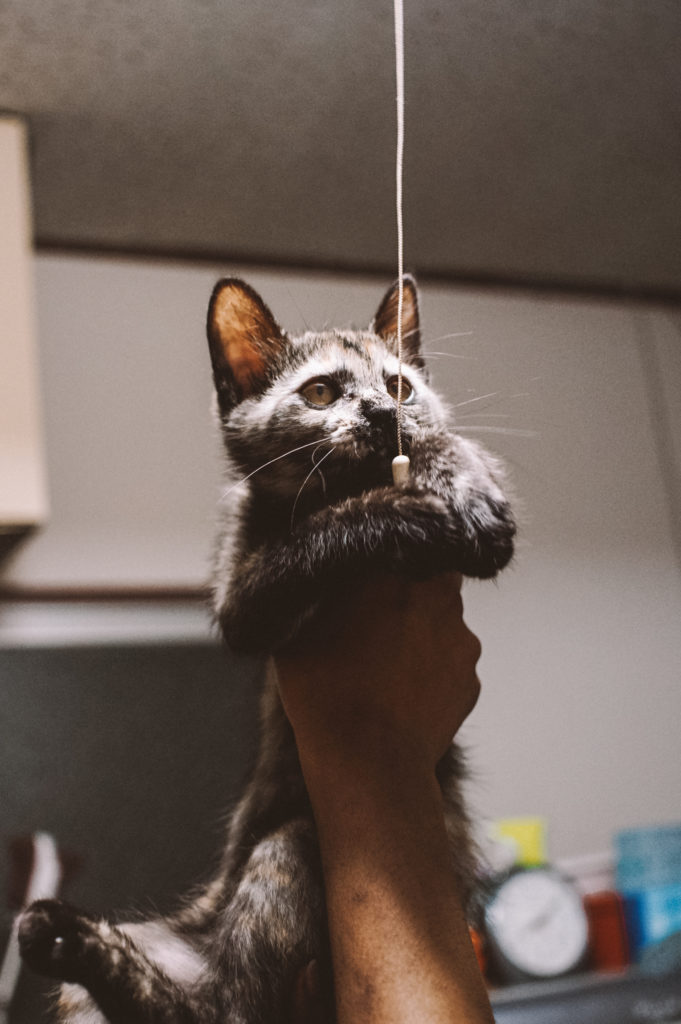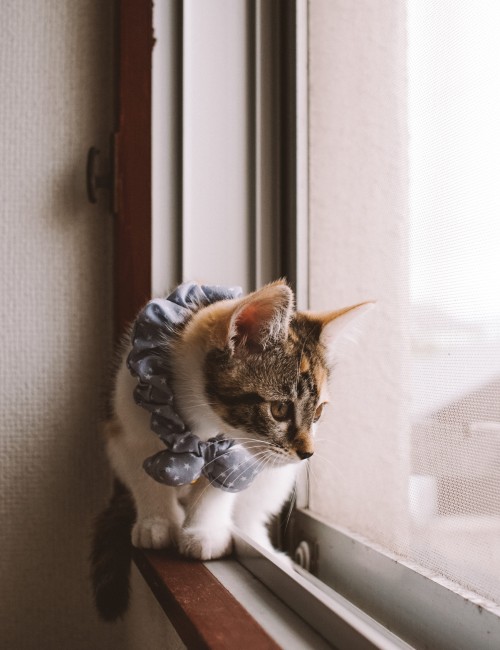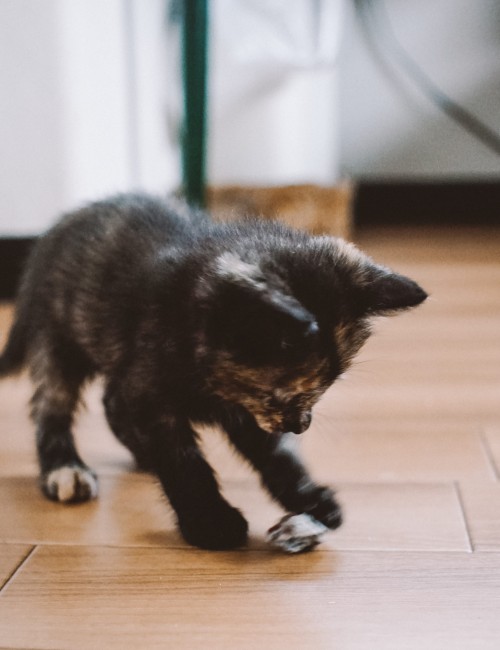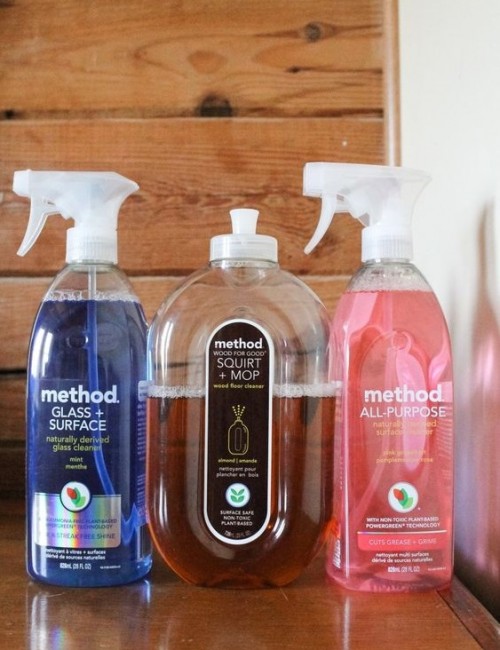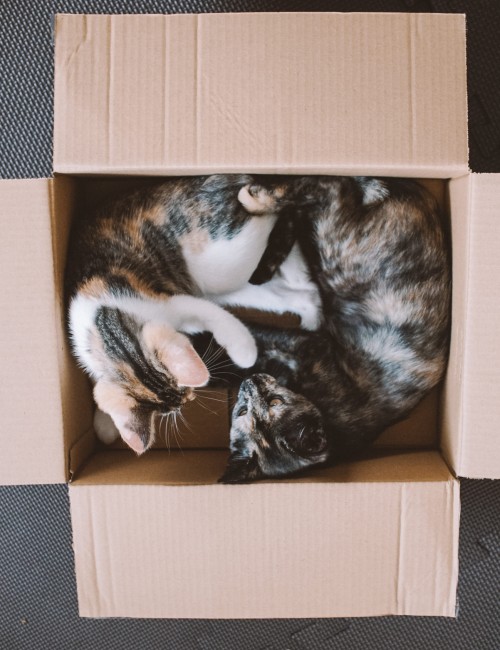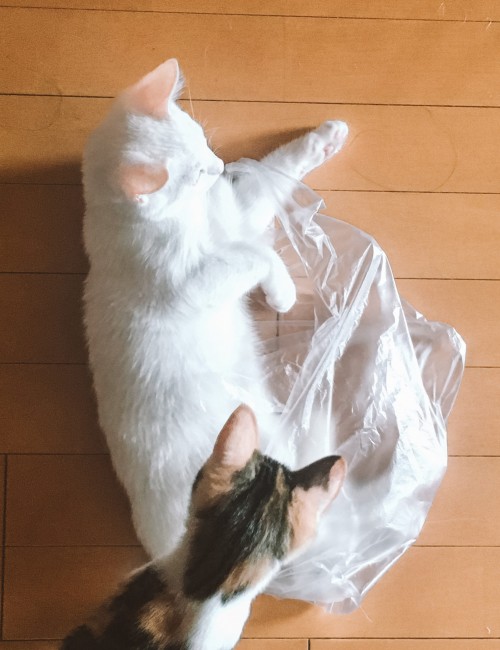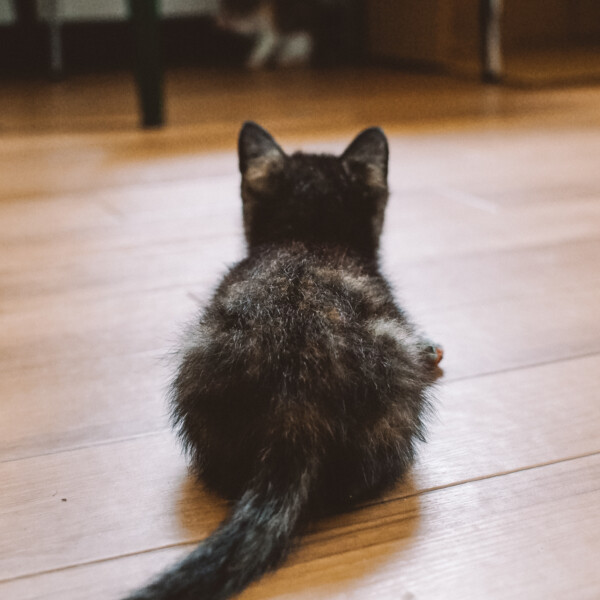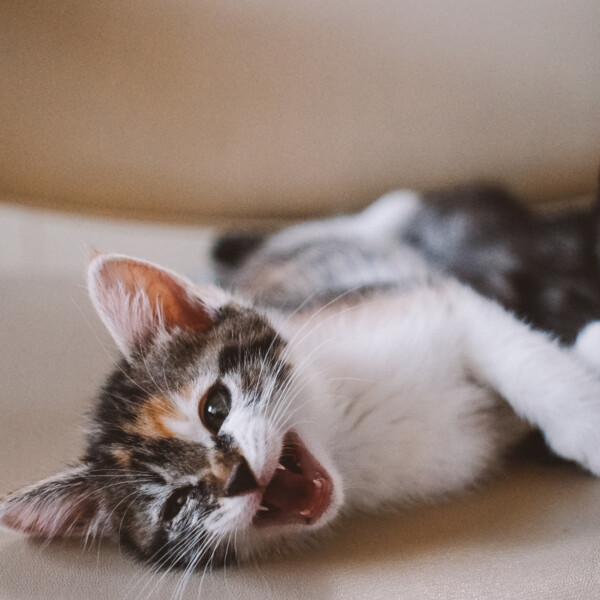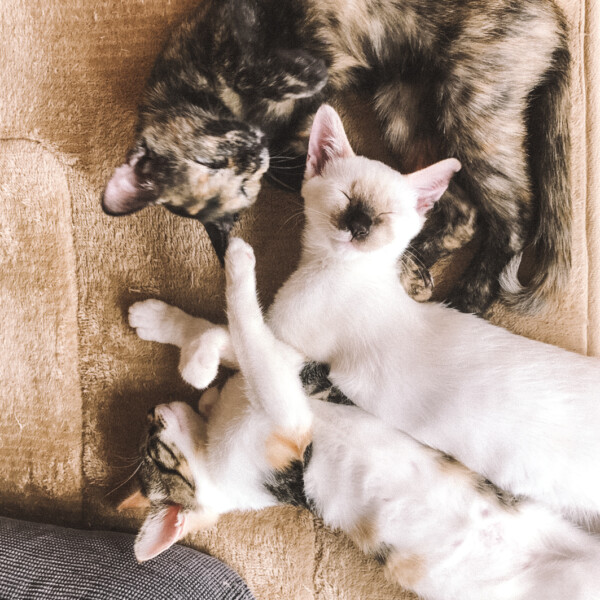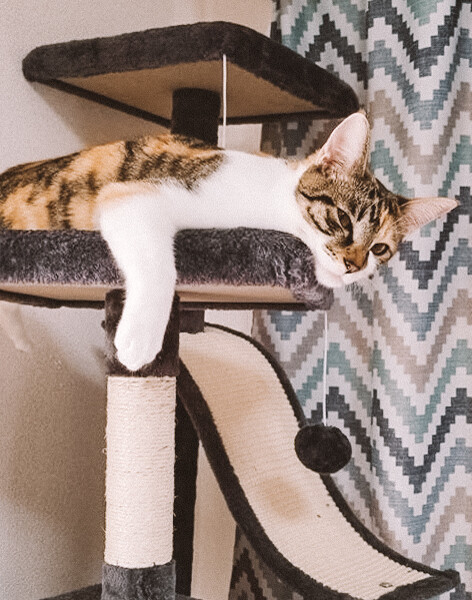Exit Door Safety: Warn all family members and visitors about your new cat. Be extra careful when returning home at night if the lights in your home are not turned on. It can be very easy for a cat to slip out in the cover of darkness. If you are hosting people and the door will be constantly opened and closed, it is better to keep your cat in another room with the door shut, during the event.
Some cats can even open doors with levered handles. Due to this, especially with a new cat, it is essential to keep ALL doors to the outside securely locked at all times. A screen door and net doesn’t always guarantee safety. Make sure that these are securely fixed in place and cannot be opened or displaced by your cat.
Always visually confirm where your cat is before leaving and after returning home. Inform local shelters, neighbours, and any affiliated foster organizations immediately if a cat does escape, so that they can help. To learn about what to do in case on an escaped cat, please read this post.
